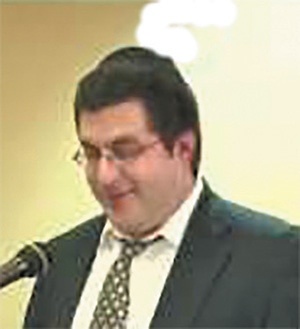
The Shavuot-night seder is very special—almost as special as the seder that we have on the night of Pesach. We all know the story of the rabbis who stayed up for the Shavuot seder and learned all through the night until their talmidim came and said it was time for Kriyas Shema Shel Shacharis.
It’s not much of a story. One of the talmidim said brachos for everyone.
But like with Pesach, you need to prepare ahead of time. You need to decide what you’re going to learn all night. You don’t want to get to shul and make a last-minute decision based on what seforim are left that no one’s using. (“Um, I guess I’ll learn Chumash Devarim!”)
And you don’t want to spend the whole night having this discussion with your chavrusa:
“What do you want to learn?”
“I don’t know, what do you want to learn?”
If you wanted that kind of talk, you would have brought your wife.
Yes, there is no lack of things to learn ever. But it’s not like you have a kevius. If you have a seder every night from midnight to five, then you should probably just learn what you always learn. Most of us don’t have that seder. We usually learn to make up for whatever we didn’t learn yesterday or might not learn tomorrow because we’re sleeping all three days so we can stay up for this one night.
In fact, some people purposely fall behind on learning before Shavuot so they can make it up on Shavuot night.
“Shavuot is coming. Time to slack off on the learning.”
It’s kind of like how we don’t eat matzah for a few weeks before Pesach.
And sure, you can start something new, but do you really want to start something that you can’t continue until probably the following Shavuot, at which point you’ll have no idea where you’re up to? I actually have a pretty deep book that I read toward the end of the night every year, and as soon as I learn it, it flies out of my head, and the next year I can’t remember where I’m up to, so I start it again. I’ve been starting this book for about 10 years now. It was an excellent investment.
So maybe that’s an idea.
But ideally, you want to learn something that you can start and finish in about four to five hours of dwindling mental faculties. Something that starts off heavy, but ends light. Many mesechtos seem to do that—they start off heavy, and near the end they’re all about the stories. But they’re a little too long for one night.
And it’s not even a long night. It’s one thing if it were Chanukah time, and the night went from like 5 p.m. to 7 a.m. But let’s put it this way: The night is so short that if you eat a fleishig night seudah, you won’t be able to drink coffee with milk until about the time you put on your tallis. And while it’s technically okay to have coffee before Shacharis, coffee’s not a great thing to drink in a tallis.
Maybe stick to just the milk.
And I say this from experience. On the first day of Pesach, I was unable to keep my eyes open for davening, so I went into the coffee room, bent over to get the milk out of the tiny fridge, and accidentally knocked over the cup with my tallis onto my tallis. So after Pesach, I brought it to the cleaners and I learned the lesson the Ribbono Shel Olam was clearly telling me, which was, “Don’t drink coffee in a tallis.”
I don’t know for sure if that’s what he was telling me, but that’s the lesson I’m taking, because it cost $42 to clean it. Which was very expensive for a cup of coffee. The most costly thing I generally clean is my kittel, which costs $13 to clean once a year, which doesn’t sound like a big deal until you realize I only wear it twice a year, and one of those times I’m fasting. On the other hand, $13 is not expensive for wine. On the other hand, it is expensive for the type of wines that I drink.
There’s always Tikkun Leil Shavuot. Tikkun Leil Shavuot is a nice sampler, like if you don’t know what the Torah is all about and you want to sample the different seforim to decide what you want to learn more of. It’s like one of those platters they bring out at a restaurant that has a little bit of everything. And you get to find out things like that meseches challah is not about the different shapes you can make with dough.
Hilchos Shavuot is also a nice thing to learn, but there aren’t that many halachos of Shavuot. It’s like one Siman in the Shulchan Orech, and it’s listed under Hilchos Pesach. Like the printer didn’t want to bother making a new heading for one page. And most of it is about what you need to add to davening.
“Hey, he agrees with my machzor! Good, I was worried I’d have to get a new machzor.”
There’s also a short mention of cheesecake.
You also might want to spend some time looking up a d’var Torah for the seudah, because you’re planning on sleeping straight through until Kiddush, and then your wife is going to want you to say something Shavuot-related. Though really you can say any d’var Torah you’ve heard the entire year, and when she says that it’s not Shavuot-related, you can point out that the entire Torah is Shavuot-related.
That can be your d’var Torah!
So now you’re back to square one.
By Mordechai Schmutter
Mordechai Schmutter is a freelance writer and a humor columnist for Hamodia and other magazines. He also has six books out and does stand-up comedy. You can contact him at [email protected].













